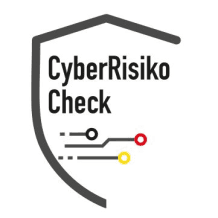Vulnerability Assessment – Systematically identify vulnerabilities
The continuous detection and assessment of security gaps in IT infrastructure is a crucial component of modern security strategies. Companies and organizations face the challenge of constantly growing threats. A thorough vulnerability assessment can show ways to increase security and mitigate risks. This text explains in detail what a vulnerability assessment is, how it is conducted, and what significance it has in today's digital world.
What is a vulnerability assessment?
First of all, a vulnerability assessment is a systematic evaluation process that identifies potential weaknesses in network environments, software applications, operating systems, and other IT components. The analysis includes both technical and organizational aspects. Various methods are employed to determine where security gaps may exist that could be exploited by attackers. But what exactly makes this process so important?
Why is a vulnerability assessment essential?
The ongoing digitization and the increasing use of interconnected systems raise the risk of becoming a victim of cyberattacks. Cybercriminals exploit vulnerabilities to unlawfully access systems, steal data, or even shut down entire networks. A structured vulnerability assessment helps to identify and rectify these risks in advance. It can serve as a preventive measure before attackers have the opportunity to execute their malicious intentions.
W-Questions for orientation:
- What are vulnerabilities? – Security gaps in IT systems that can potentially be exploited.
- How is vulnerability identification carried out? – Through automated scans, manual tests, and code analyses.
- Why is regular execution important? – To constantly counteract current threat situations and ensure security standards.
- Who should conduct a vulnerability assessment? – IT security experts, so-called penetration testers, as well as internal or external audit teams.
- When is a vulnerability assessment sensible? – At regular intervals as well as before and after significant IT changes.
- Where do the focal points of an assessment lie? – In the analysis of networks, applications, operating systems, and end devices.
Process and methods of a vulnerability assessment
The process of a comprehensive vulnerability assessment typically breaks down into several phases. Initially, there is a planning and preparation phase where objectives, scope, and boundaries of the assessment are defined. In the next step, the target system is mapped to keep an eye on all potentially relevant components. Subsequently, weaknesses are identified using automated tools and manual tests.
Exploration phase: In this phase, information about the target system is gathered. This includes identifying IP addresses, operating systems in use, open ports, and installed software applications. This information forms the basis for the subsequent detailed analysis.
Scanning and identification: Automated security scans are at the heart of the vulnerability assessment. These tools search the systems for known vulnerabilities based on current databases. Additionally, specific tools are used to test individual attack vectors. The results of this scan provide an initial overview of potential security issues.
Evaluation and risk assessment: After vulnerabilities have been identified, the severity of each is evaluated. The risk posed by a single vulnerability is assessed in relation to the probability of occurrence and the potential impact. This risk assessment enables priorities to be set and targeted actions to be derived.
Detailed analysis: In the manual phase, experienced security experts examine potential vulnerabilities more closely. Their expertise and current threat information come into play. Manual tests and simulations are conducted to check whether the identified gaps could indeed be exploited.
Reporting and action planning: The final phase includes documenting all results. A detailed report provides an overview of each identified vulnerability as well as recommendations for remediation. For companies, this evaluation forms a valuable basis for targeted investments in increasing IT security.
Relevant threats and risks in detail
A vulnerability assessment deals with various types of vulnerabilities. These include internal system errors, outdated software, configuration errors, and human errors. The most common risks include:
• Insecure network architectures: Lack of segmentation or inadequate firewalls allow potential attackers access to sensitive areas.
• Unpatched software: Regular security updates are essential to close known vulnerabilities. Neglected updates provide attackers with an opportunity to gain access.
• Incorrect configurations: So-called default settings or incorrectly configured permissions can pose system-relevant vulnerabilities.
• Social engineering: In addition to technical vulnerabilities, the human factor also plays a significant role. Phishing, social engineering, or careless behavior when handling sensitive data are common attack vectors.
The importance for companies and organizations
A comprehensive vulnerability assessment offers several advantages that go far beyond mere vulnerability identification. Not only is the existing security level assessed, but also a roadmap for improving IT security is developed. Companies benefit in multiple ways:
Proactive risk minimization: Through continuous monitoring and regular assessments, vulnerabilities can be identified and remedied early. This reduces the likelihood of cyberattacks and minimizes potential damages.
Compliance with legal regulations: Many industries are subject to strict legal and regulatory requirements regarding IT security. A regular vulnerability assessment serves as evidence that a company is proactively taking steps to fulfill legal requirements.
Improved trustworthiness: Customers, business partners, and regulatory authorities gain trust in companies that actively work to enhance their security architecture. This strengthens long-term competitiveness and reputation in the market.
Efficiency enhancement: The result assurance serves not only to rectify errors but also to optimize IT processes. By systematically presenting security risks, prioritized measures for process optimization can be introduced. This also includes training and awareness measures for employees.
How is a vulnerability assessment concretely conducted?
The practical implementation of a vulnerability assessment varies depending on scope and purpose. Nonetheless, all approaches follow a fundamental pattern: planning, detection, analysis, and reporting. Importantly, the individual phases must seamlessly transition into one another, always considering the current security status of the system.
A central aspect is automation. Modern tools can conduct extensive scans in a short time and uncover vulnerabilities that may be present at nearly every level of IT infrastructure. However, automation does not replace the expertise of experienced security consultants who can interpret the results and carry out deeper analyses.
Practical applications and helpful tools
For the implementation of an effective vulnerability assessment, there are various tools and frameworks that are used both in industry and in academic environments. These include:
Nessus: A widely used tool that enables detailed scans of networks and systems.
OpenVAS: An open-source solution that conducts comprehensive scans and analyses and can be particularly interesting for smaller companies.
Qualys: A cloud-based service that provides continuous security monitoring and alerts against new threats.
Nikto: Software specifically developed for web servers that identifies known vulnerabilities in web applications.
Additionally, many companies rely on customized solutions that are tailored to specific requirements. These hybrid models combine automated tools with manual checks to create a holistic picture of the security situation.
Important pitfalls and best practices
Although a vulnerability assessment offers numerous advantages, there are also challenges and potential pitfalls. Inadequate planning can lead to unrecognized dark zones in the IT environment. There is also the risk that outdated tools or improper configurations may yield erroneous results. To counter these risks, companies should observe the following best practices before the assessment:
• Regularly
Vulnerability Assessment in Germany: Current Developments
The importance of vulnerability assessment in Germany is continuously growing. According to recent studies from the Federal Office for Information Security (BSI), German companies are increasingly affected by cyber threats. The Bitkom Association reports that 84% of German companies have fallen victim to cyberattacks in the last two years.
Especially in the area of vulnerability assessment, the following trends are emerging:
Increasing investments in preventive security measures
Heightened awareness for holistic security concepts
Integration of vulnerability assessment into existing compliance frameworks
EU Compliance and Vulnerability Assessment
With the introduction of the NIS2 directive and tightened GDPR requirements, German companies must adjust their security strategies. Vulnerability assessment plays a central role in meeting regulatory requirements.
Important compliance aspects:
Documentation of security measures
Regular reviews and updates
Proving effectiveness to regulatory authorities
Practical implementation in corporate everyday life
The integration of vulnerability assessment into everyday corporate life requires a structured approach. Experience shows that companies benefit from a gradual implementation that considers both technical and organizational aspects.
Think of vulnerability assessment as insurance for your business: The better you prepare, the lower the risk of damage from security incidents.
Further Security Measures
For a comprehensive security strategy, you should combine vulnerability assessment with other security measures:
Vulnerability Management - Systematic vulnerability management
Penetration Testing - Comprehensive security tests
Security Hardening - Employee awareness
Incident Response Plan - Preparation for security incidents
Conclusion and Next Steps
A vulnerability assessment is an essential component of modern cybersecurity. Investing in professional vulnerability assessment measures pays off in the long term through increased security and compliance.
Would you like to optimize your security strategy? Our experts are happy to assist you in implementing vulnerability assessment and other security measures. Contact us for a non-binding initial consultation.
🔒 Act now: Have our experts evaluate your current security status
📞 Request consultation: Schedule a free initial consultation on vulnerability assessment
📋 Compliance Check: Review your current compliance situation
📌 Related Topics: Cybersecurity, IT Security, Compliance Management, Risk Assessment




